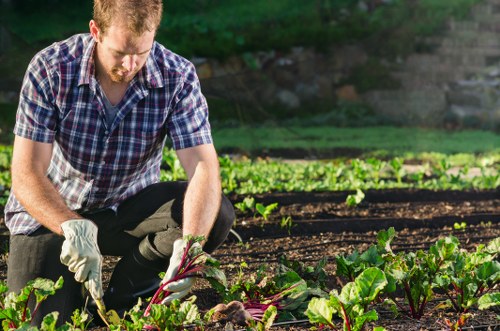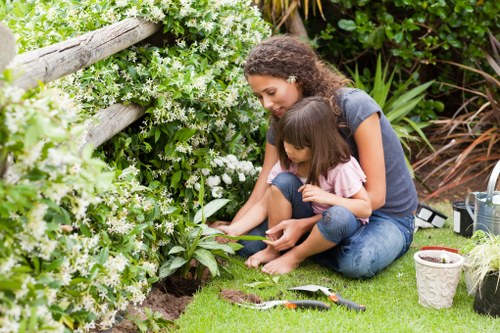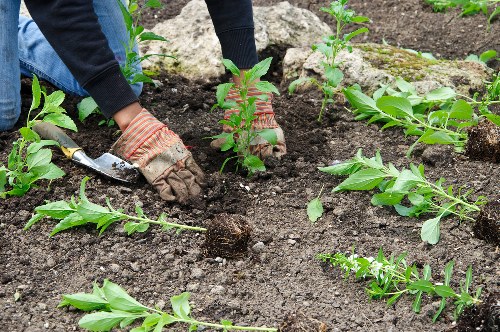Gardeners Leaves Green: Cultivating a Verdant Future

Gardeners Leaves Green is more than a phrase – it is a celebration of nature, an invitation to explore the soulful connection between gardeners and the lush, vibrant leaves of their cherished plants. This concept reminds us of the beauty that unfolds when nature and human care intertwine, enveloping us in a world of growth, renewal, and hope. Every leaf tells a story, and every garden nurtures a dream. In today’s eco-conscious era, understanding the principles behind Gardeners Leaves Green is essential for anyone who wishes to create an oasis of calm and color in their daily lives.
In our journey through the realms of gardening and sustainable living, the term Gardeners Leaves Green stands as a symbol of organic practices, environmental responsibility, and the aesthetic pleasure of watching a garden thrive. Gardeners from all walks of life take pride in their green sanctuaries, where each leaf contributes to the overall harmony of nature. It is a message of hope and unity, urging us to care for every tiny blade of grass and every bountiful branch, so that the future remains as vibrant and lush as the leaves in our gardens.
This article will guide you through the multifaceted world of Gardeners Leaves Green. We will explore the concept’s origins, its practical implications, and the techniques that modern gardeners use to maintain a healthy, radiant landscape. In doing so, we aim to provide information that is not only educational but also empathetic. Whether you are a seasoned horticulturist or a beginner eager to learn the ropes, you will find inspiration, detailed insights, and practical tips that make nature accessible to everyone.
What Are Gardeners Leaves Green?

The term Gardeners Leaves Green encapsulates the idea of nurturing the natural environment using mindful techniques and sustainable practices. At its core, it is about honoring the energy of nature and embracing techniques that allow plants to grow freely and abundantly. Gardeners who adopt these practices tend to use organic fertilizers, natural pest control, and water-saving methods. The green leaves serve as indicators of health; lush, vibrant foliage is a sign that plants are thriving in an environment where natural processes are respected and enhanced.
In simple language, Gardeners Leaves Green means getting back to the basics: using nature’s own tools to promote growth. Many modern gardeners integrate traditional methods with contemporary innovations. For example, composting organic waste not only enriches the soil but also reduces the strain on our natural resources. This blend of old and new creates a balanced approach that is appreciated in communities around the world. The philosophy behind this concept speaks to a deeper respect for the environment and encourages everyone to be part of the change for a greener planet.
This section introduces you to the fundamental questions: what does it mean to have green leaves, and why are they so important? When you see a plant bursting with life, it is nature’s way of communicating that the ecosystem is in balance. As you read on, you will discover practical tips for achieving healthier foliage, along with inspiring stories from gardeners who have transformed their spaces into verdant retreats. Every leaf matters, and every gardener plays a vital role in preserving the beauty of our natural world.
History and Origins of Gardeners Leaves Green

The origins of the phrase Gardeners Leaves Green can be traced back to ancient horticultural traditions where gardeners observed nature and learned to work in harmony with it. Throughout history, people across different cultures have valued green leaves as symbols of life and renewal. Early civilizations in Europe, Asia, and the Americas practiced forms of organic gardening long before modern chemical fertilizers and pesticides became widespread. Their methods, which relied on natural compost, crop rotation, and the careful observation of seasonal changes, laid the foundation for what we now refer to as sustainable gardening.
Historical accounts reveal that traditional gardens were designed not just for sustenance but also for aesthetic pleasure. The balance of sun and shade, the careful selection of plant species, and the timing of planting cycles were all part of an art that treated every leaf as an essential piece of nature’s mosaic. Over time, the wisdom of these pioneer gardeners was passed down, evolving into a philosophy that resonates with today’s environmental aspirations. This rich legacy continues to inform current practices and inspires a new generation of gardeners who wish to rekindle their connection with the earth.
Today, the influence of those early gardening traditions can be seen in community gardens, urban green spaces, and conservation projects worldwide. The methods established by our predecessors still serve as guidelines for creating eco-friendly gardens. With modern scientific research validating many of these age-old practices, the idea of achieving a naturally vibrant garden has gained renewed prominence. By embracing these traditions, modern gardeners not only honor their heritage but also contribute to a sustainable future where every green leaf symbolizes ongoing growth and renewal.
Techniques, Benefits, and Organic Practices

Modern gardeners continue to evolve the philosophy of Gardeners Leaves Green by adopting innovative practices that enhance plant health while minimizing environmental impact. One of the most significant techniques is the use of organic compost. Compost enriches the soil by adding essential nutrients and improves soil structure, which in turn allows green leaves to flourish. This technique is complemented by natural pest management strategies, which rely on biological controls rather than harsh chemicals. These sustainable practices not only benefit the plants but also protect local wildlife and promote a balanced ecosystem.
Another effective method is the practice of water conservation through drip irrigation and mulching. By focusing on efficient water usage, gardeners ensure that every drop nourishes the roots of their plants. These methods are essential, especially in urban environments where water is a precious resource. The emphasis on conservation leads to lush, thriving foliage that is both effective in nutrient absorption and aesthetically pleasing. Gardeners who incorporate these techniques often report improved plant vitality and more consistent growth, proving that nature can flourish with a little extra care and consideration.
Moreover, the benefits of organic gardening extend beyond the immediate garden environment. They include improved soil fertility, lower levels of pollution, and a reduced carbon footprint. Many gardeners find that when they work with natural resources rather than against them, their gardens develop an unmistakable vibrancy. The deep green color of the leaves is a visual confirmation of a successful balance between human ingenuity and nature’s enduring power. In addition to physical benefits, these practices also foster a sense of community and shared responsibility, uniting neighborhood gardeners in their quest for a healthier, more sustainable world.
Designing Your Garden with Leaves Green

Designing a garden that embodies the spirit of Gardeners Leaves Green requires both creativity and careful planning. Garden design is not merely an aesthetic exercise; it reflects a commitment to environmental stewardship and sustainable practices. Home gardeners and landscaping professionals alike can embrace design principles that emphasize natural balance. Begin with an understanding of your local climate, soil type, and water availability, and then select plants that naturally thrive in those conditions. A thoughtful garden layout not only enhances visual appeal but also encourages natural pest control and water efficiency.
Incorporating features such as raised beds, native plant species, and organic mulches can transform your garden into a living, breathing work of art. Many designers suggest using a mix of shrubs, flowering plants, and grasses to create a dynamic range of textures and colors. Maintaining a harmonious connection with nature often involves blending modern garden design with time-tested methods. This balanced approach results in a space that is not only pleasing to the eye, but also serves as a sanctuary for local wildlife and a training ground for aspiring gardeners who dream of a greener future.
Local Spotlight: Nearby Leaves Green Areas
For many gardeners, the influence of the Gardeners Leaves Green concept extends beyond their own backyards. Around the region, several communities embrace this philosophy, creating public spaces that are both beautiful and sustainable. For instance, North Leaves Green is known for its collaborative community gardens that host workshops and events on organic gardening. East Leaves Green offers visitors a serene park filled with native plants and winding paths that invite leisurely strolls. Other areas such as South Leaves Green, West Leaves Green, and Central Leaves Green each showcase distinct features—from vibrant plant diversity to innovative water management systems. These neighborhoods are a testament to the growing recognition of sustainable practices and the importance of community engagement in nurturing our environment.Local Spotlight: Sustainable and Community Gardening
Neighborhoods near the core of Gardeners Leaves Green philosophy have evolved into hubs of sustainability and creativity. In regions like River Leaves Green and Hilltop Leaves Green, local councils support community-driven initiatives that bring together residents, environmentalists, and local artisans. These areas often host farmers markets, educational seminars, and hands-on workshops, giving community members a chance to experience gardening techniques firsthand. The sense of belonging and shared purpose in these areas has led to innovative ideas, where local businesses, schools, and neighborhood associations collaborate to create eco-friendly spaces that serve both recreational and educational needs.
In nearby Meadow Leaves Green and Forest Leaves Green, community gardens are designed to be accessible for people of all ages, fostering a love for nature among young learners and inspiring older generations. Local experts often organize garden tours, where residents can observe sustainable water usage, composting methods, and organic pest control systems in practice. These urban and suburban projects illuminate how public spaces can become models for environmental stewardship, and they serve as practical examples of how Gardeners Leaves Green can be realized in everyday life.
Other vibrant areas such as Lakeview Leaves Green, Gardenview Leaves Green, and Valley Leaves Green have taken the concept to new heights by incorporating innovative design features and eco-technologies. These communities underscore the importance of connecting with nature, even in densely populated urban settings. With creative planning and a commitment to using natural resources responsibly, these areas continue to inspire other neighborhoods to follow suit, proving that a greener future is possible when communities come together in support of sustainable living.
Sustainable Gardening Practices and Community Events
Beyond the design and planning of individual gardens, sustainable gardening practices play a critical role in shaping entire communities. Local initiatives often focus on reducing waste, conserving water, and promoting organic gardening practices that help the environment thrive. By using natural fertilizers, embracing crop rotation, and engaging in regular soil testing, gardeners can maintain healthy plots that yield bountiful harvests and lush greenery. These practices are essential to achieving the lasting impact envisioned by the Gardeners Leaves Green movement.
Many communities now host regular events, such as green fairs and eco-workshops, that provide residents with practical training on sustainable methods. These gatherings allow gardeners to share tips, exchange plant cuttings, and collectively solve common horticultural challenges. The dynamic exchanges at these events embody the spirit of collaboration that defines Gardeners Leaves Green—where every leaf, every plant, and every gardener contributes to an interwoven network of life and support. More than ever, the drive to preserve and protect our natural surroundings unites people across generations.
Furthermore, local schools and community centers are increasingly incorporating gardening projects into their curriculum. These initiatives help instill respect for nature in younger generations, teaching them through hands-on experience the benefits of organic gardening and the importance of environmental stewardship. As these programs grow and flourish, they pave the way for a future where sustainable practices become second nature. Such efforts underscore that Gardeners Leaves Green is about more than just maintaining beautiful gardens; it is about nurturing a community that values its natural resources and dedicates itself to the long-term health of the planet.
Frequently Asked Questions
Q1: What does the phrase 'Gardeners Leaves Green' really mean?
A1: It signifies the care and commitment gardeners put into nurturing leafy plants, promoting sustainability and organic practices that result in healthy, vibrant gardens. Essentially, it reflects a natural balance and a respect for environmental harmony.
Q2: How can I start a garden inspired by Gardeners Leaves Green?
A2: Begin by analyzing your local climate and soil type. Use organic fertilizers, consider composting, and choose native plants that flourish naturally. Research local gardening workshops and community gardens for support and practical advice.
Q3: Are there any benefits to using natural pest control methods?
A3: Absolutely. Natural pest control preserves the ecosystem, reduces chemical use, and nurtures helpful insects that maintain the garden's balance. This method enhances soil fertility and supports the growth of lush, vibrant foliage.
Q4: What nearby areas can I visit to get inspired by the Gardeners Leaves Green movement?
A4: You can explore various community gardens and green spaces such as North Leaves Green, East Leaves Green, South Leaves Green, West Leaves Green, Central Leaves Green, River Leaves Green, Hilltop Leaves Green, Meadow Leaves Green, Forest Leaves Green, Lakeview Leaves Green, Gardenview Leaves Green, and Valley Leaves Green. Each area offers unique landscaping styles and community events focused on sustainable gardening.
Q5: How do community events contribute to the success of sustainable gardening?
A5: Community events foster knowledge-sharing, offer practical demonstrations, and build a network among gardeners. They help nurture a supportive environment where sustainable practices can be promoted and improved collectively, ensuring the long-term health of local green spaces.